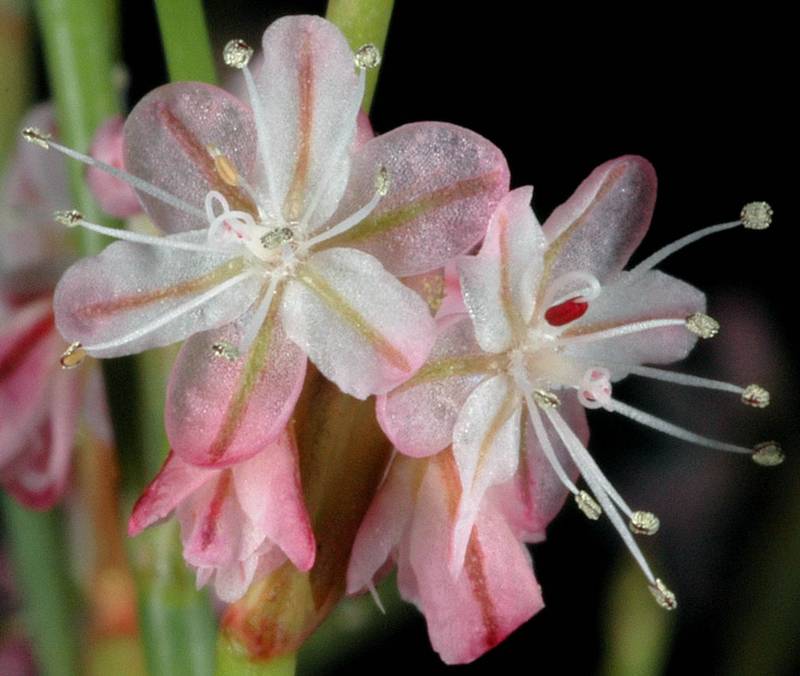|
|
broom buckwheat
|
|
Upright annual 5-50 cm. tall with a single stem topped by a freely-branched inflorescence, and with numerous, petiolate leaves in a whorl a short distance above the base. |
|
Sub-basal, the blade oval to broadly elliptic, 5-30 mm. long, gray-woolly beneath and gray-green above, the slender petiole 1-3 times as long as the blade. |
|
Inflorescence freely-branched, with involucres 1 per node and sessile at the branch junctions and along the branches and on the branch tips, varying from cylindric and strongly ribbed up to 3 mm. long to cup-shaped and without ribs, 1.5-2 mm. long, and with the 5 lobes rounded and 1/5 the total length; tepals 1.5-2.5 mm. long, narrowly cup-shaped, white, pink or yellow. |
|
Achene 3-angled. |
|
|
Eriogonum gordonii |
|
|
June-September |
|
Sagebrush deserts and dry ponderosa pine forest openings; tolerant of dry, disturbed conditions. |
|
|
Occurring east of the Cascades crest in Washington; Washington to California, east to Idaho and Nevada.
|
|
Native |
|
Not of concern |
E. baileyi, E. cernuum, E. codium, E. compositum, E. douglasii, E. elatum, E. flavum, E. heracleoides, E. maculatum, E. marifolium, E. microtheca, E. niveum, E. nudum, E. ovalifolium, E. pyrolifolium, E. sphaerocephalum, E. strictum, E. thymoides, E. umbellatum, E. vimineum |
E. baileyi, E. cernuum, E. codium, E. compositum, E. douglasii, E. elatum, E. flavum, E. heracleoides, E. maculatum, E. marifolium, E. microtheca, E. niveum, E. nudum, E. ovalifolium, E. pyrolifolium, E. sphaerocephalum, E. strictum, E. thymoides, E. umbellatum |
| |


